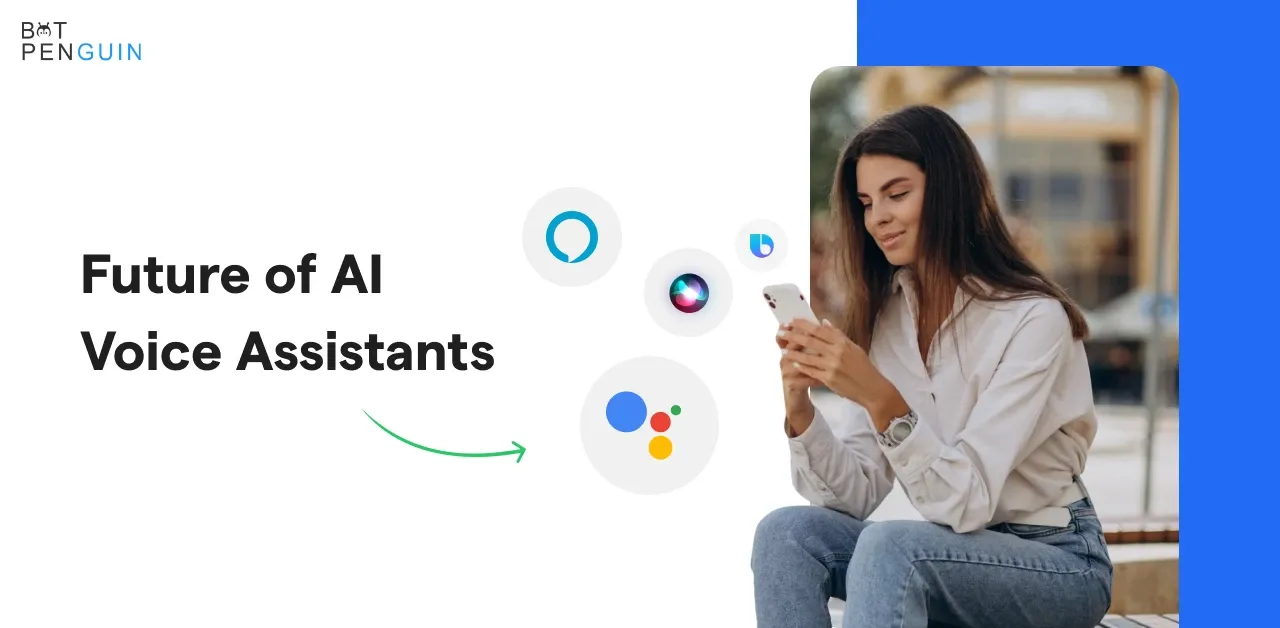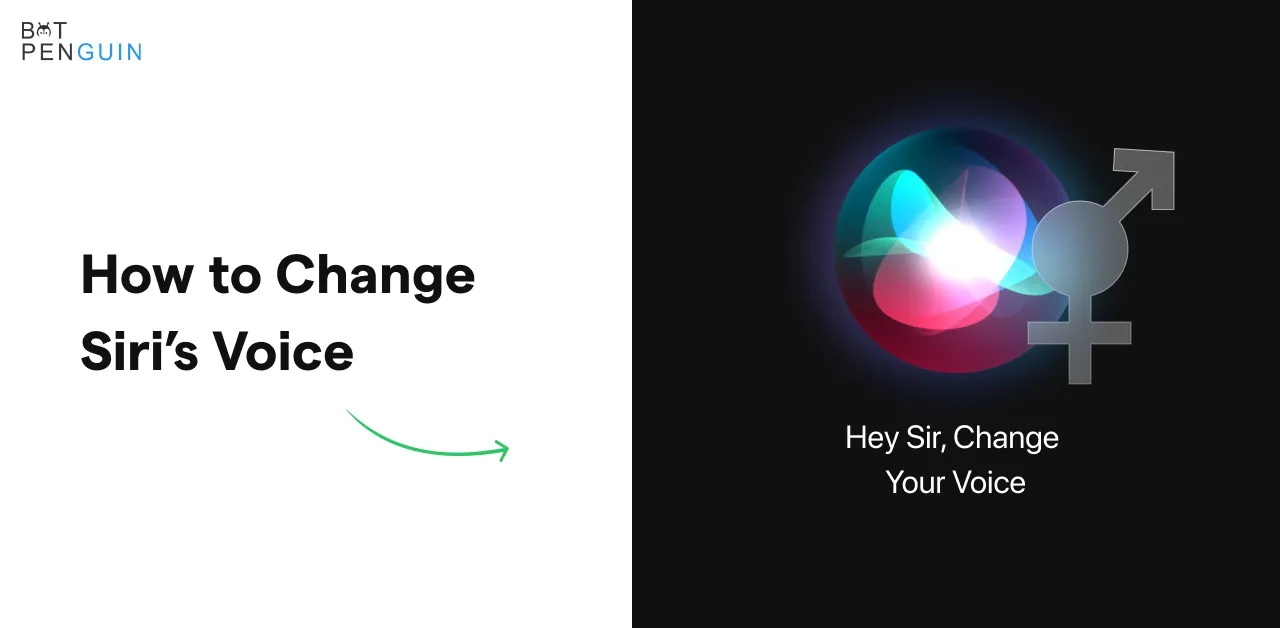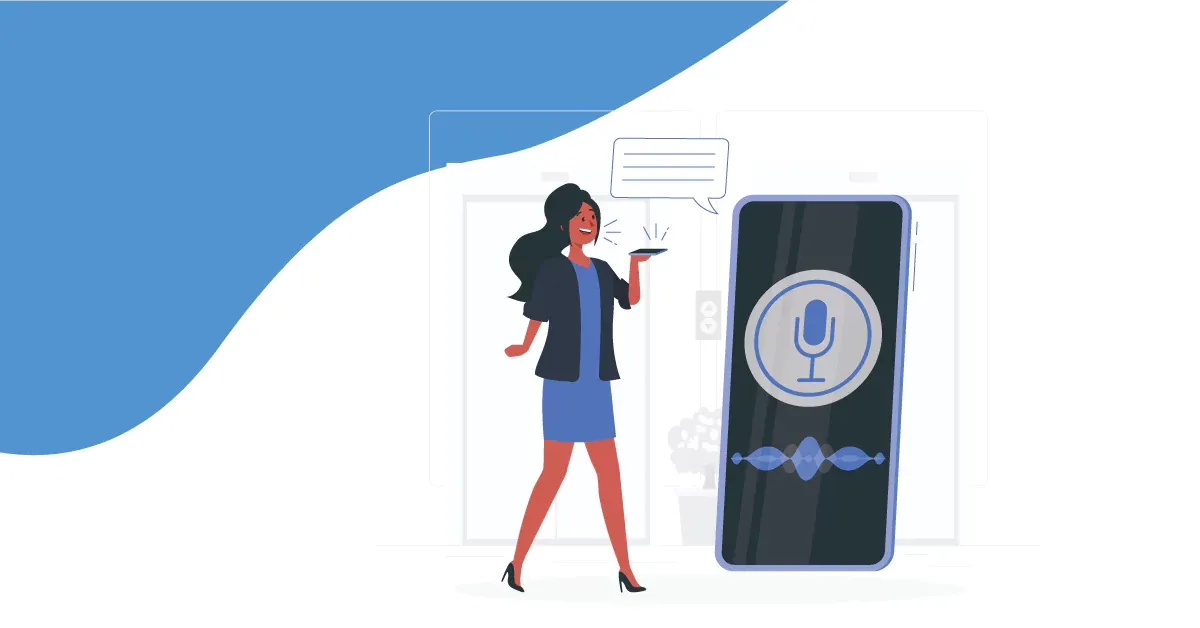Voice technology is revolutionizing the way we communicate. From smart speakers to virtual assistants, voice technology is becoming integral to our daily lives.
According to Statista, 63% of U.S. companies are developing voice-enabled technology for Amazon Alexa, and 31% of U.S. broadband households own smart speakers with voice assistants.
By 2025, Statista predicts 30.9 billion IoT devices will be connected to voice technology.
With voice technology, businesses can streamline communication, reduce costs, and improve productivity.
In this blog, we'll explore the benefits of voice technology and how Voicetech Solutions can help your business streamline communication. So, let's dive in!
Bespoke Voicetech
Companies can create a distinct digital voice that people can identify as being part of that brand, just like they have their logos and typefaces (think Siri and Apple).
To promote a seamless and uniform experience, these voices can be used in a wide range of interactions. Customers gain a comfortable sense of ease, recognition, and trust, for instance, when they hear the same voice across several platforms, regardless of where they interact with the business.
Voicetech can sound increasingly like human ones thanks to innovations in natural language understanding (NLU), conversational artificial intelligence (AI), and neural text-to-speech (TTS).
Data Analysis through Voicetech
Voice data can be examined for various purposes, much like other sorts of data. Given that only a tiny portion of call center voice interactions are currently being studied, there is a lot of promise here. To learn more about customer motivations, preferences, and concerns, variables like age, gender, geography, and emotion can be collated. Such assessments can be beneficial when deciding things like producing new products and services, running marketing campaigns, and enhancing customer service.
Expansion of Flexibility
According to the Forbes Technology Council article, businesses may now use a single API standard, increasing voicetech' 's versatility and providing several essential advantages. The following skills are
- Using any audio format, such as phone, internet, or mobile
- To aid in a better comprehension of customer intent
- To advance IoT and cybersecurity techniques, including anti-spoofing and user authentication
Greater comprehension
The same technologies that enable a more human-like sound also enable machines to comprehend more information. NLU facilitates understanding more sophisticated material, such as news articles, and the comprehension of brief information inputs, such as short commands.
It enables voicetech with speech recognition and language translation in conjunction with AI. These technologies support a speech-enabled system that can respond to client issues and use the appropriate vocal inflections depending on the circumstance when combined with TTS.
Enhanced Safety
Voicetech, such as precise voice recognition, can improve cybersecurity. According to a recent TechRepublic article, people's voices may be detected based on tone, pitch, tempo, and sound variations.
Each person's speech is distinctive due to the interaction of these factors, and the technology can be used, for instance, without the contact center callers' knowledge.
More businesses will utilize this voicetech as it develops to identify customers, replacing or enhancing the usage of passwords and other biometrics.
When conducting telemedicine consultations, for instance, healthcare practitioners can use it to make sure they are conversing with the correct patient. In contrast, banks can use it to protect customer assets.
Another potential for using speech technology for security has recently arisen with the rise of work-from-home (WFH) positions. Because home offices don't always have the best security, voicetech can be a tool for IT professionals to protect corporate data.
Dictation and transcription with Voice Technology
Instead of writing or typing, voicetech can narrate notes or draft papers. Automatic transcription can be helpful when you need a written record of a discussion, interview, meeting, or other significant voice-based communication. A variety of software solutions currently offers both of these features.
Though still in their infancy, both technologies have advantages and disadvantages. For instance, the program could only partially correct, particularly in circumstances that call for more context, which humans are better at identifying.
When discussing highly specialized things, such as medicine, this feature becomes super crucial. Nonetheless, software often completes tasks far more quickly than humans do.
Between Industries
Voice technology has specialized applications across many different industries. Some universities in higher education use voicetech to provide information about their resources.
One use of communication in healthcare is to motivate patients to make lifestyle changes, such as those related to nutrition, exercise, and medication use.
Thanks to its conversational features, customer service departments may now employ voice technology to understand and respond to common consumer requests.
Voice technology can also establish new means of promoting and selling things, such as voice-enabled SEO search. New capabilities in buses and trains allow passengers to ask for route information. The value of search functionality is seen in the video down below.
As we look to the future, we also consider the possibilities for voice technology advancements in 2023 and beyond.
Background noise during audio and video conferences
The epidemic and subsequent instructions to stay home worsened consumers' already challenging experiences with voice user interface (VUI) devices.
The top voice tech challenge of 2023 may be parents working from home on Zoom calls as their kids try to study using different audio conferencing gadgets while attempting to communicate and be understood.
The background cacophony of several speakers and noise, whether from the same home or the surroundings, makes it difficult to communicate while video or audio conferencing, while driving, on the phone, or when speaking to your digital voice assistant.
For reliable speech user contact, precise voicetech technology like voice recognition and enhancement is required. All industries that use voice technology will benefit from the manufacturers of voice-enabled products, including VUI technology that enhances their current technology.
Gadgets for Speech Recognition and Voice Assistance
Although voicetech use increased after the pandemic caused chaos, user annoyance has always been an issue, particularly with smartphone digital assistants. 62% of survey participants in a study expressed irritation with the lack of comprehension, dependability, and correctness.
Yet, using speech recognition and voice technology, particularly in the home learning environment, may present the biggest challenges for kids.
Children were not considered as a user base in the construction of voicetech. Children have a considerably more complex voice, language, and frequently chaotic behavior than adults. Voice recognition software must consider the nuances of children's speech patterns, language structure, voice pitch (which fluctuates considerably with age), syntax, grammar, and pronunciation. Children, particularly younger ones, are likelier to hear an error notice or the wrong answer from a digital voice assistant than adults, who can change demands by speaking more clearly and varying tone and vocabulary.
Children will give up using voicetech to communicate when these difficulties are combined with the additional issue of background noise when learning from home. Even worse, a child's confidence can be damaged if they are informed they are wrong while they are correct by a machine that misunderstood the message. The contrary is also detrimental. When a youngster is given a false positive and told the incorrect response is correct, socio-emotional harm may result.
Designing voicetech that can learn from and adapt to the speech patterns of children is a problem.
Privacy concerns with Voice Technology
Online sales increased in 2020 due to the pandemic, which is anticipated to last for years. Since March, retailers have noticed a 30% to 40% spike in eCommerce sales. However, a lack of trust is a significant barrier to further expansion in internet buying. One in four consumers, according to PwC, say they would not contemplate using a voice assistant to shop now or in the future.
Yet according to a survey, 46% of respondents don't believe their voice assistant would appropriately execute their request. People are deterred from adopting these gadgets by needing more confidence in using voicetech or online payments.
Privacy concerns also play a role in the adoption of voice technology. Several school districts are reluctant to deploy voice technology due to concerns about compliance with Children's Internet Privacy Protection Act. However, some teachers enjoy the advantages of employing VUI devices in the classroom.
Voicetech also has privacy concerns in other industries, such as keeping financial and banking data secure or hiding information from ears that aren't supposed to hear it.
To grow in these markets, voice technology businesses must address these issues. A VUI that accurately captures speech and controls the information stream processed by voice recognition technologies can be useful.
Touchless Displays
The coronavirus has significantly altered awareness of the objects we touch daily, such as displays. Hygiene is emphasized everywhere, from grocery store checkout lines to bank ATMs, airport kiosks, and elevator buttons.
While some of these locations use voice-control technology, many still need to modernize. However, those already using speech recognition and control may be constrained in noisy settings.
Voicetech has suffered due to the unreliability of speech-to-text technologies, which decode spoken instructions. For all sectors that offer interactive public screens, voice enhancement technology that simultaneously lowers background noise and produces clear speech recognition is required.
Voice Technology's future
While voice technology is essential for using Zoom, talking to digital assistants, or online speech transcription services during this epidemic, numerous other voice recognition applications have already seen significant advancements.
Human-Centric Methods
Making technology more human-centric could solve several problems with voice user interface and speech recognition capabilities.
At the highest level, interfaces should become less rigid or "machine-driven" and more "human-centric," allowing people to engage with machines organically rather than adhering to a rigid, unbending linguistic rule.
Children interacting with voice recognition technology can be problematic, but this human-centric approach can help. Businesses like Google and Amazon also create technology that can recognize people's emotions through their voices and deeper conversational abilities. This kind of technology might also resolve the issue of speech recognition's random variables.
Artificial Intelligence and Machine Learning
Voictech will advance thanks to machine learning, artificial intelligence (AI), and the data that powers AI. The key to speech technology and the ever-expanding data that powers AI is machine learning, which makes both AI and the robots that use it smarter. Voice AI is designed to gain knowledge from experiences, spot trends, and offer solutions.
Leslie Pound, CEO of Tada Labs, stated in a recent episode of Voice Talks that "speech tied to real-query data" will be the future of voice technology.
Data doubles in size every year. Our automobiles, phones, and lights all generate data. People will continue to integrate increasingly with the vast data and database infrastructure.
Personalized Journeys with Speaker Verification
Voicetech will also communicate with users in a more personalized way. Digital voice assistants, like Google Home, can already be programmed to respond to your voice solely and read out a predetermined list of information, such as news, the weather, your calendar, and hand-selected podcasts based on preset voice activations.
Everyone in a home can receive personalized responses from Amazon's Alexa. The accuracy of customized answers increases as Alexa's voice recognition skills get sharper over time.
Possibilities for personalization will continue to increase due to the rise in voice recognition capabilities, which went from 10,000 to more than 100,000 in just three years.
Proactive Voice Assistants
The capacity of voice assistants to anticipate your needs is the next stage in speech recognition and personalization.
Hardware and software that enable the speech recognition device to listen to and log a significant quantity of data from a user's daily life are necessary for this ability to connect with people proactively. The fact that Alexa learns from billions of user interactions every week and knows which skills are frequently used together allows it to foresee and intelligently group skills together in a recommendation.
Diversification of Voice Technology
The number of voice-enabled smart devices, including smart TVs, watches, speakers, automotive voice assistants, and other gadgets, have already arrived.
Voice technology is also ready for further integration in the automotive sector. Speech-activated navigation, smart speakers, and voice assistants provide a more comfortable and secure driving experience. By 2023, the Capgemini Research Institute projects that 95% of consumers will use voicetech in automobiles.
Soon, people can use their voices to open windows, start cars, and turn on air conditioners. At the same time, a smart auto assistant recognizes each speaker—a driver or passenger—and his or her location inside the car and offers tailored responses.
With improved microphone arrays, voice-enabled smart televisions interacting with virtual assistants will become more prevalent.
Voice technology has been quite desirable in the gaming sector. 63% of smart speaker users, according to a poll by Adobe, have one in their living rooms. This usage presents a sizable opportunity for the voice technology and gaming industries to collaborate on creating a voice-enabled experience for friends and family.
Businesses already offer voice-controlled tabletop gaming. Based on its well-liked science fiction series, 3%, Netflix made a voice-controlled multiplayer game called "The 3% Challenge" in collaboration with Doppio Games. Several businesses, such as HBO, Lego, Pretzel Lab, and others, have also created voice-controlled games.
Conclusion
These new capabilities will make it possible for the particular uses described here and many others, such as administrative assistance, hands-free activities, and support for actual customer service representatives.
Businesses should begin to consider how they might be able to use speech technologies and a "no touch" philosophy for various functions, such as order, operations, and customer service.
Such decisions should, as always, be focused on addressing real business needs rather than implementing new technologies just because they're the coolest thing ever.
Nonetheless, many businesses are sure to find a strong fit between their problems and voice-based solutions, given the wide range of possibilities for these fascinating developments.
Don't miss out on the latest buzz! Explore more trending topics by checking out our blog on BotPenguin



